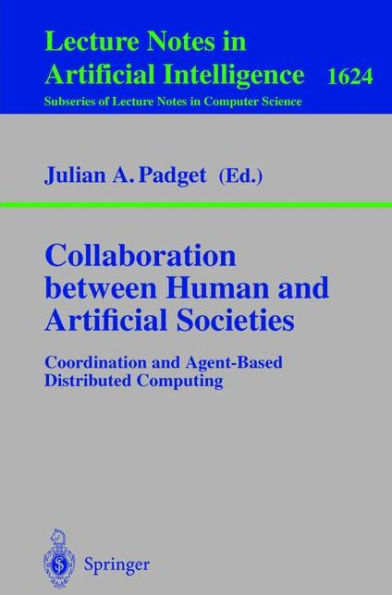Collaboration between Human and Artificial Societies: Coordination and Agent-Based Distributed Computing
The full title of the HCM network project behind this volume is VIM: A virtual multicomputer for symbolic applications. The three strands which bound the network together were parallel systems, advanced compilation techniques andartificialintelligence witha commonsubstrate in the programminglanguage Lisp. The initial aim of the project was to demonstrate how the combination of these three technologies could be used to build a virtual multicomputer — an ephemeral, persistent machine of available heterogeneous computing resources — for large scale symbolic applications . The system would support a virtual processor abstraction to distribute data and tasks across the multicomputer, the actual physical composition of which may change dynamically. Our practical objective was to assist in the prototyping of dynamic distributed symbolic app- cations in artificial intelligence using whatever resources are available (probably networked workstations), so that the developed program could also be run on more exotic hardware without reprogramming. What we had not foreseen at the outset of the project was how agents would unify the strands at the application level, as distinct from the system level o- lined above. It was as a result of the agent influence that we held two workshops in May and December 1997 with the title “Collaboration between human and artificial societies”. The papers collected in this volume are a selection from presentations made at those two workshops. In each case the format consisted of a number of invited speakers plus presentations from the network partners.
1111354081
Collaboration between Human and Artificial Societies: Coordination and Agent-Based Distributed Computing
The full title of the HCM network project behind this volume is VIM: A virtual multicomputer for symbolic applications. The three strands which bound the network together were parallel systems, advanced compilation techniques andartificialintelligence witha commonsubstrate in the programminglanguage Lisp. The initial aim of the project was to demonstrate how the combination of these three technologies could be used to build a virtual multicomputer — an ephemeral, persistent machine of available heterogeneous computing resources — for large scale symbolic applications . The system would support a virtual processor abstraction to distribute data and tasks across the multicomputer, the actual physical composition of which may change dynamically. Our practical objective was to assist in the prototyping of dynamic distributed symbolic app- cations in artificial intelligence using whatever resources are available (probably networked workstations), so that the developed program could also be run on more exotic hardware without reprogramming. What we had not foreseen at the outset of the project was how agents would unify the strands at the application level, as distinct from the system level o- lined above. It was as a result of the agent influence that we held two workshops in May and December 1997 with the title “Collaboration between human and artificial societies”. The papers collected in this volume are a selection from presentations made at those two workshops. In each case the format consisted of a number of invited speakers plus presentations from the network partners.
54.99
In Stock
5
1

Collaboration between Human and Artificial Societies: Coordination and Agent-Based Distributed Computing
310
Collaboration between Human and Artificial Societies: Coordination and Agent-Based Distributed Computing
310Paperback(1999)
$54.99
54.99
In Stock

Product Details
| ISBN-13: | 9783540669302 |
|---|---|
| Publisher: | Springer Berlin Heidelberg |
| Publication date: | 01/14/2000 |
| Series: | Lecture Notes in Computer Science , #1624 |
| Edition description: | 1999 |
| Pages: | 310 |
| Product dimensions: | 6.10(w) x 9.25(h) x 0.36(d) |
From the B&N Reads Blog
